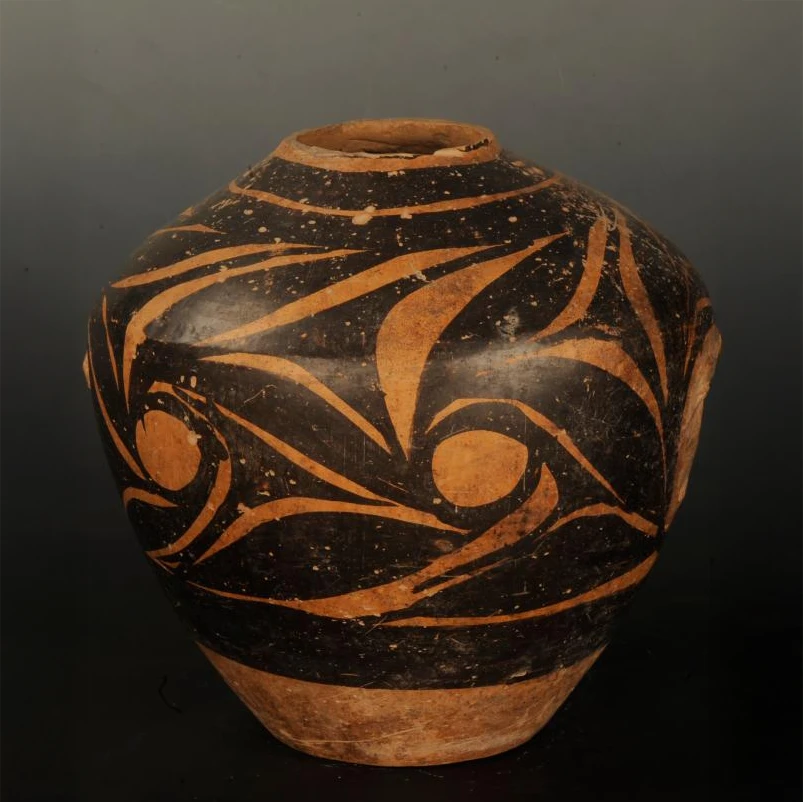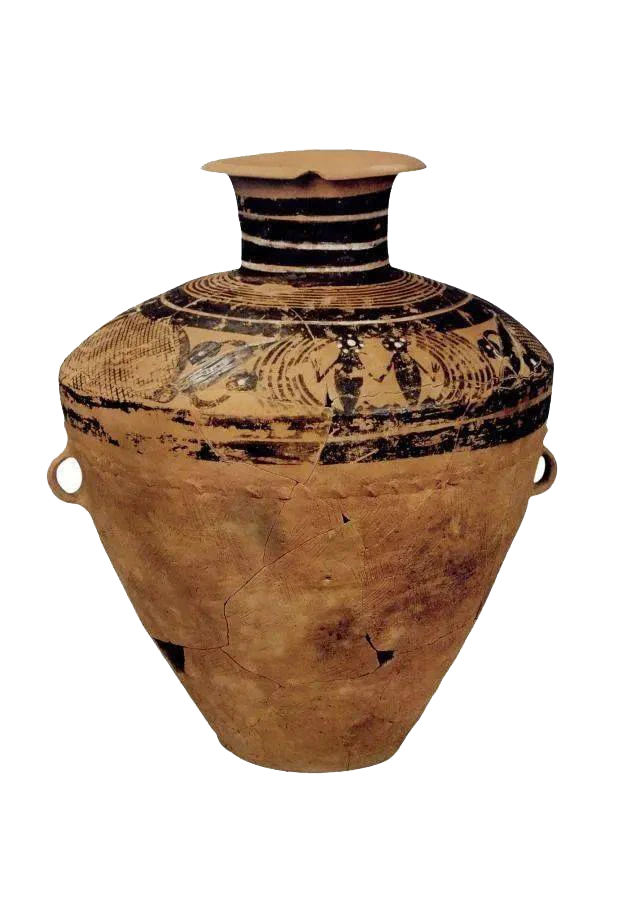The Visual Language of Majiayao Culture
The Majiayao (“马家窑”) culture was a significant Neolithic civilization in China, dating from approximately 3300 to 2000 BCE. It was centered in what is now Gansu and Qinghai provinces and is best known for its hand-built painted pottery, rich in sculptural rhythm and symbolic pattern.
The pottery of Majiayao often features swirling lines, curved motifs, and geometric repetition. These were applied by hand using mineral-based pigments, producing designs that are highly abstract—far removed from literal representation, yet visually suggestive and emotionally resonant.
Archaeologists agree that Majiayao pottery was not merely utilitarian. Many vessels carried ceremonial or symbolic roles. In that sense, form itself became a visual language—a precursor to the long arc of Chinese aesthetic thinking.
Totemic Structure and Linear Abstraction
Totems were never just decorative. They functioned as collective symbols—expressions of belief, belonging, and cosmology. In early cultures, totems rarely took the form of literal depictions. Instead, they appeared as sequences of curves, loops, spirals, and repeated structures.
The decoration system of Majiayao pottery embodies this totemic logic. Its curved lines, rhythmic spirals, and deliberate use of spacing created patterns meant not to be read, but to be felt. Repetition and motion became tools of reverence.
This kind of “non-illustrative” design represents a foundational branch of Chinese visual language—emphasizing rhythm, continuity, and symbolic flow rather than figural clarity.
Nature, Spirit, and the Ancient Worldview
In the cultural systems spanning from Majiayao to Longshan, totems represented more than graphic signs—they embodied the early human relationship with nature. Dragons, phoenixes, mountains, lightning, rivers, and celestial bodies all served as symbolic intermediaries between humans and the unknown.
These totems were not chosen for visual resemblance, but for their cyclical qualities, energy, and sense of cosmic order. In early Chinese cosmology, nature was alive—everything moved, responded, and carried meaning.
Totems were not meant to be interpreted but sensed. Swirl patterns, lozenges, and grid motifs may well have formed part of this sensory language. The pulsing rings of a spiral might be a meditation on the universe; intersecting diamonds and grids, an echo of hope and cultivated order.
Light Stone’s Design Response
Our Totem collection draws deeply from the aesthetic, structural, and symbolic language of Majiayao culture.
Inspired by the rhythmic curves, enclosed compositions, and visual logic of early totemic vessels, we reinterpret these forms into abstract, flowing, and symmetrical structures in our designs. These shapes are not recreations of ancient imagery—they are contemporary translations of order, energy, and perception.
What we hope the wearer feels is not a specific motif, but a quiet resonance: a sense of ancient wisdom, unspoken blessings, and a structural beauty that transcends time.
Explore the collection:
Visit the Totem Collection





